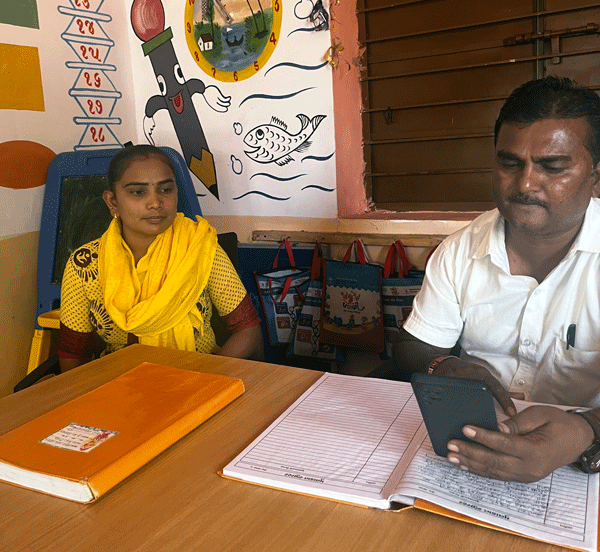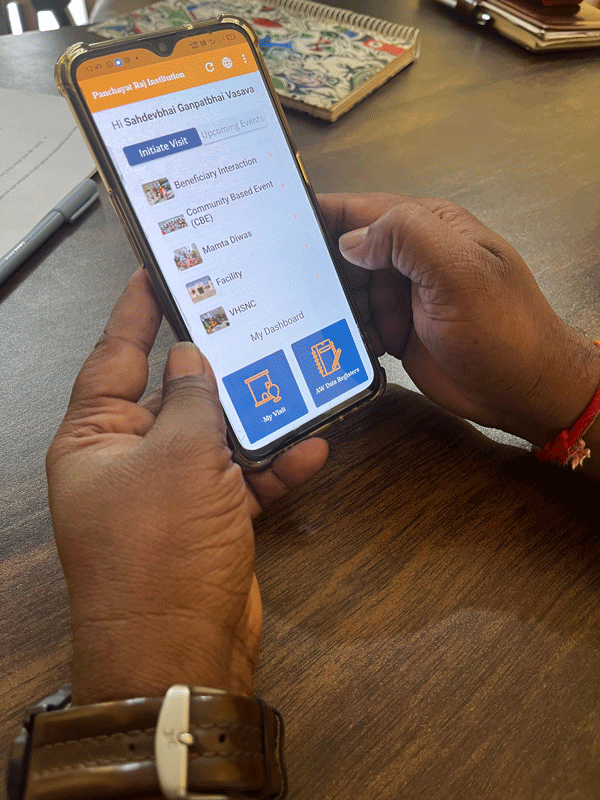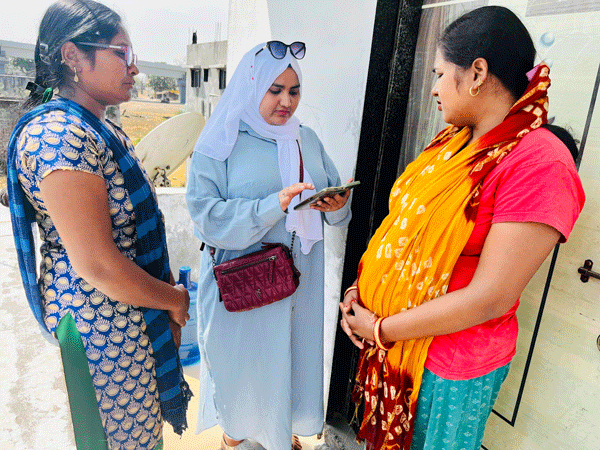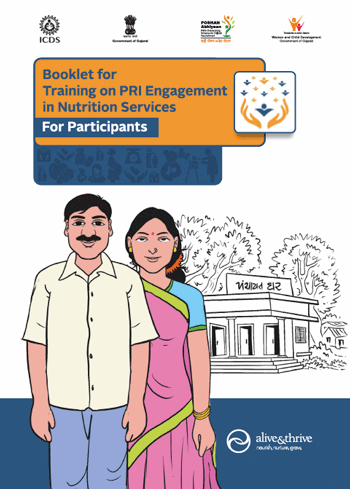About a year ago, Bharat Bhai, 47, decided to run for election in Baran Village, a small village of about 1,200 residents in the Bharuch District of Gujarat State, situated on the west coast of India.

“I have been a popular and helpful person in the village, and I have been actively engaged on various social welfare projects,” he recalled recently. “I wanted to work for the community in an official capacity. So, I ran to be the Sarpanch.”
Bharat won the seat, becoming a Panchayati Raj Institution (PRI) representative. PRI is grassroots local government in India, a system of local self-government at the village level with a long history, tasked with “economic development, strengthening social justice and implementation of Central and State government schemes,” according to the Ministry of Panchayati Raj (MoPR), Government of India.
Almost immediately, Bharat confronted the challenges of being the "Sarpanch," the title given to PRI representatives, chief among these helping community residents access the myriad government programs that provide various types of support, from food assistance to health care to education.
The Government of India provides dozens of such schemes and services and navigating them is no small task.
“Our research showed that PRI representatives hold an important position in their communities – and could connect families to services that could positively impact their nutritional status,” said Binu Anand, Country Director of Alive & Thrive’s India country program. “We realized that providing support and assistance to these representatives would likely help improve nutrition outcomes.”
Indeed, studies show that the number of households receiving all the services together they qualify for remains low, thereby diluting the impact at the beneficiary level; the quality of services is also an area of serious concern.

“These are schemes that touch on women and child development, health and nutrition, food security, public health, livelihood, education, drinking water and sanitation, infrastructure support, among various other welfare schemes,” explained Noveena Swapnabh, Communication and Advocacy Specialist at Alive & Thrive’s India country program. “It’s difficult to keep track of all the public welfare schemes and services provided by the government and ensure 100 percent beneficiary coverage under the available schemes.”
The PRI Application, she explained, is a multifaceted resource, providing a variety of support: It helps the representatives understand the concept of optimal nutrition and gain insights on various public welfare services and benefits; it also helps them understand their role in ensuring that every household is able to access the schemes by leveraging the available data and information to resolve or escalate the issues; and, it supports them to conduct Village Health, Sanitation and Nutrition Committee meetings effectively and efficiently.
Initiated as part of a larger Alive & Thrive implementation research study that is examining the convergence of nutrition-specific and -sensitive services at the household level, the new app, which is complemented by training on local services, is gaining popularity.
“The information at the training and via the app has been very helpful,” Bharat said. “Without the app, we did not have any guidance on how to proceed nor where to find support. Now, I’m able to pass along the correct information to people and they are learning of available benefits.”
Haleema Shoaib Hatia, 26, agreed. She has been a PRI representative for about six months.

“As a PRI representative, my role is to ensure that improved health and nutrition services are reaching the community and to ensure children are enrolling in and completing school,” Haleema said. “The PRI app has helped in guiding me how to interact with residents in households regarding the health and nutrition and other services available to them. Earlier, we did not have access to the right information.”
“We saw that PRI representatives are uniquely placed to ensure last mile delivery of services through their active engagement with frontline workers and the community,” Swapnabh explained. “They were able to encourage people to make optimum use of the services available to them, thereby enhancing both the demand and supply side of services. They are also crucial in monitoring the services, recognizing any gaps at the source and providing support to resolve the gaps.”
Working closely with the Government of Gujarat State, Alive & Thrive helped build the app, ensuring it includes all the various schemes (nutrition-specific and -sensitive) available to community residents. The app first allows the PRI representatives to assess the convergence of services at the household level – that is, it helps them ensure a household is aware of and utilizing available public services.

“To prevent and reduce undernutrition, it is important that beneficiaries receive not only the nutrition services but also other public welfare schemes such as education, livelihood, women and child development, drinking water, sanitation and infrastructure,” Swapnabh explained.
Secondly, the app allows PRI representatives to assess delivery of key health and nutrition services via major community platforms such as health sub-centers, Aanganwadi Centers, schools and fair price shops – stores that sell commodities, like wheat, rice and corn, for lower prices. Thirdly, the representatives can use it to guide systematic review meetings with village level stakeholders to identify issues in health and nutrition service delivery and identify potential solutions.
“Previously, I had no information about the schemes and services available,” said Jayesh Bhai Natu Bhai Chaudhery, a PRI member in Naren, Mandvi, Surat, for the past four years. “Now I am able to regularly communicate information to people in my community such as that regarding anemia and availability of Iron-Folic Acid tablets.”
The solution package is currently being implemented in three districts of Gujarat – Surat, Bharuch and Mehsana – under the aegis of the Commissionerate of Women & Child Development, Gujarat, and the National Health Mission Gujarat.
As a part of the intervention, an intensive training program was held for Sarpanches for all the program areas. The trainings covered nutrition sensitivity, an overview of key government welfare services and their targeted beneficiaries and hands on training on how to use the PRI app.
The active participation of PRI representatives in the intervention has already resulted in noteworthy outcomes. Of the 584 PRI representatives involved in the program, 66% have participated in community-based events and, currently, 32% are using the PRI app for understanding the reach of services to women and families in their communities.
“The app has been very helpful,” Hatia said. “I have been able to make my community aware of village health service days, available government schemes and the benefits those schemes offer. In one case, I was able to steer a pregnant woman to use free services at the government health facility, saving her the cost of going to a private clinic.”
With the orientation provided by Alive & Thrive team along with the easy-to-use mobile application, the Sarpanches now conduct regular Village Health and Sanitation Committee meetings where issues are identified – and resolved.
"The information has been helpful and without the app, we did not have guidance on how to proceed with activities or what areas we should look into," Bharat said. "Now, I'm able to pass along the correct information and my constituents are able to learn about the benefits."
